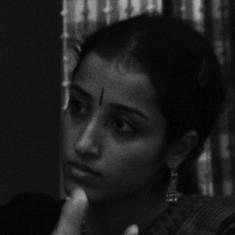The March 10 release Kong: Skull Island resurrects the giant ape that was first seen on the screen in 1933. Several countries have adopted the monstrous creature who loses his life because of love, including India.
Ever since the Hollywood production King Kong, there have been numerous adaptations of the gargantuan ape’s fateful encounter with a beautiful young woman – the first of which was in the same year of its release. Japan’s Shochiku Studios produced Japanese King Kong (1933) and King Kong in Edo (1938). The second title located the ape in the samurai era.
The other major Japanese studio, Toho, pitted Kong in a contest with the homegrown monster Godzilla in 1962. King Kong vs Godzilla was a major hit, and led to a series of crossover appearances for the ape. He featured in the Japanese production King Kong Escapes (1967), in which he faced his mechanical nemesis Mechani-Kong, a character that first appeared in the animated series The King Kong Show.
Hollywood too sent off Kong in different directions. In 1961, Konga saw a villainous doctor’s experiment turning a baby chimp into a killer ape that turned on his creator and other victims before finally being stopped.
The central Kong iconography – a prehistoric creature that is lured out of its natural habitat and turns on civilisation – travelled to other film industries over the years. South Korea produced its version called Ape (1976), in which the giant primate rampaged across Seoul. Hong Kong joined the club too with The Mighty Peking Man (1977), in which the ape, named Utam, had a beautiful female companion and an evil businessman as its adversary.
Parodies followed too, such as King Kung Fu (1976), in which a gigantic gorilla with kung fu skills laid waste to Kansas. King Kong Lives (1986) featured a female ape and was a sequel to the successful reboot from 1976, featuring Jessica Lange as the blonde woman who caught the ape’s eye.
India wasn’t far behind in acknowledging the undeniable attraction of massive monsters. In 1966, Balwant B Dave’s Gogola saw the irate cousin of the Japanese Godzilla throw Mumbai out of gear. Before Gogola came King Kong’s Indian cousin, Otango, in the 1963 movie Shikari.

Ajit, KN Singh and Madan Puri played pivotal roles in the local version, directed by Mohammed Hussain. The filmmaker had several stunt films and B-adventures to his credit, including Diler Detective (1948), Superman (1960) and CID 909 (1967).
Singh was the mad scientist Cyclops, who created Otango; Puri was the nasty businessman who wanted to commercially exploit Otango; Ajit played the dashing hunter who helped the team capture Otango while falling in love with Ragini, a circus owner’s daughter.

Shikari could have been a good Indian version of King Kong, but it failed mainly because Otango didn’t get enough screen time. Too much attention was devoted to the romance between the leads. The movie did pick up in the scenes featuring Cyclops and had hummable songs, but the overall premise was wasted.
Despite its flaws, Shikari is enjoyable mainly because of the troika of Bollywood’s leading evil men of the period. Mainstream Bollywood hasn’t attempted anything like this – for movies that celebrate size and scale, we have Baahubali.











